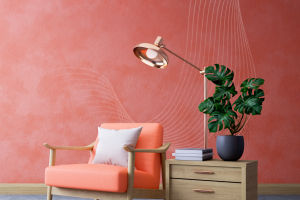Decorating a new place or redoing your home? Whatever the case, it can be challenging to choose furniture color and decor exactly how you imagined. A vital aspect of this process is coordinating colors.
If you want to learn how to select furniture colors and coordinate them with different tones and color pallets, keep following the read!
First off, it’s important to consider how color influences feeling. While there are some scientific correlations (such as yellow making you feel positive and hopeful, or blue making you feel calm and at peace), there are also personal ones. Maybe you loved the turquoise toilet of your childhood. Or your first boyfriend’s apartment was painted lilac, but curiously smelled like Cheeto dust, so lilac as a genre is ruined for you. Whatever your personal associations with color, they’ll influence the shades you want in your home. Personal comfort should always trump trend: when making a shortlist of your favorite pieces, be sure to check in with yourself as to whether you’re picking a particular chair for the ‘gram, or because you know it’s going to be a great long term investment. If you’re really struggling to identify your home-style, take some cues from your closet. What colors do you gravitate towards on a daily basis? Are you an adventurous dresser? Take these cues to heart as you consider how to choose your furniture color.
If we are talking about decorating, you probably have an idea in mind of what you like. Maybe you have saved some inspiration on Pinterest or have taken pictures of the types of furniture you want.
Usually, people begin by choosing the color of the room. But we are here to tell you that you should actually start by picking the furniture color.
Decorating your home office? Start by choosing the study table or office chair’s colors.
Redoing a bedroom? Go to the furniture store with the room furniture color in mind instead of the walls. Only after you choose the desk, sofa, sheet set, pillowcase, cushions, and everything else you need will you select the room’s color.
This goes for every color, except for maybe white. So don’t worry about this before you choose your furniture.
By doing this, you naturally set the room’s tone by building a palette. For example, you can match a bright color desk with a neutral wall. It is important to remember that furniture comes in a limited range of colors.
Sometimes you fall in love with a sofa that only comes in three colors. But with paint, you can find so many different ones and even combine them. So don’t settle for an office desk you do not like because of the room wall color.
You might be thinking that some pieces can be a significant investment. But you can easily change the atmosphere of the room with accessories. For example, a white duvet cover can make a considerable difference in a room, and you can change it whenever you like.
If you're not working with a showpiece sofa, then a sofa in a neutral color is a popular choice. Neutral sofas are easy to decorate around, and can easily keep up with your style as it changes over the years.
Neutral sofa fabric includes beige, gray, taupe, and cream. A matte beige sofa fabric can appear dull around other colors, but a textured beige fabric with flecks of monochromatic color can create interest without adding new colors. Gray sofas can range from pale to charcoal colors. Considered a style chameleon, gray can be sophisticated, comfortable, cool or crisp. Neutral sofas can quietly complement your other decor, but still be stylish and attractive.
A sofa of any color can be beautifully integrated into your space if you treat it as another color from your color scheme. This means adding accessories or prints in the same color as the sofa, to spread the color around the room. A sofa is a large expanse of fabric, by repeating pops of the same color as an accent, it can balance your room.


